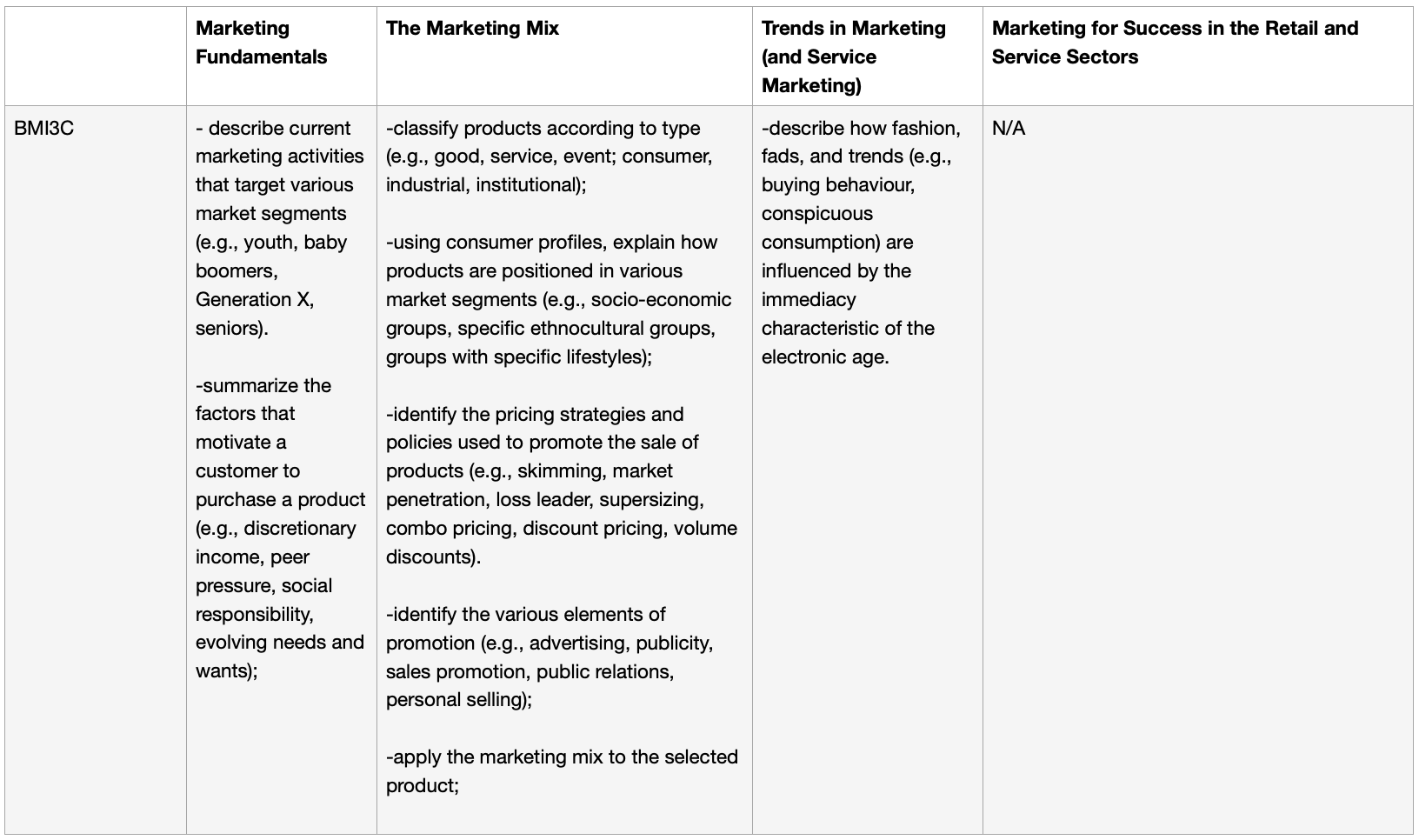Interactive Visualizations for Knowledge Building Communities
Intro
Why do we design board game for educational setting?
Marketing education often struggles to capture student engagement, relying heavily on lectures and static case studies. The challenge was to create a dynamic learning tool that promotes collaboration, critical thinking, and strategic planning. The absence of teaching experience within the design team presented an opportunity to apply principles from product design to craft an educational game that could resonate with both educators and students. Our design journey began with a deep dive into the Ontario Grade 11 marketing curriculum.
Our Target Audience & Learning Expectations
Our target audience for this game is primarily students who are studying Ontario Grade 11 Business Studies Curriculum: Marketing BMI3C and BMX3E (typically 16-18 years old), many of whom are enrolled in courses that include workplace-related content as part of their curriculum. This game will support their further learning or prepare entry-level work in business fields. We believe that immersing them in realistic scenarios will allow them to truly grasp the competitiveness of marketing, helping to better simulate and making practical understanding valuable. Related Ontario curriculum expectations mainly focus on the marketing mix learning and selected learning expectations from Marketing Fundamentals and Trends in Marketing/Marketing Success.
List of related Specific learning outcomes from the Ontario Curriculum grade 11 marketing :
Literature References
Gee, J. P. (2003). What video games have to teach us about learning and literacy. Computers in entertainment (CIE). https://doi.org/10.1145/950566.950595
Kolb’s Experiential Learning Cycle. (n.d.). Toronto Metropolitan University (TMU). Retrieved November 5, 2024, from https://www.torontomu.ca/experiential-learning/faculty-staff/kolbs-el-cycle/
Kotler, P., & Keller, K. L. (2016). Marketing management (15th ed.). Pearson Education. ISBN-13: 9780134058498
Ministry of Education. (2006). The Ontario curriculum, grades 11 and 12: Business studies (revised). Ontario Ministry of Education. https://www.edu.gov.on.ca/eng/curriculum/secondary/business1112currb.pdf
Pelletier, C. (2005). Book review: Rules of play: Game design fundamentals. Visual Communication, 4(1), 121–124. https://doi.org/10.1177/1470357205048940
Sheth, J. N., Newman, B. I., & Gross, B. L. (1991). Why we buy what we buy: A theory of consumption values. Journal of Business Research, 22(2), 159–170. https://doi.org/10.1016/0148-2963(91)90050-8
Solomon, M. R. (2018). Consumer behavior: Buying, having, and being (8th ed.). (2009). Management Decision, 47(5), 845–848. https://doi.org/10.1108/00251740910960169
Upton, B. (2017). Situational game design (1st ed.). CRC Press. https://doi.org/10.1201/b21655


